#scala santa
Explore tagged Tumblr posts
Text
Salire (o scendere) una scala. Allenare lo spirito 8/Climbing (or descending) a ladder. Spiritual training 8.
Giacobbe fece questo sogno: una scala poggiava sulla terra, mentre la sua cima raggiungeva il cielo e i messaggeri divini vi salivano e vi scendevano. (Genesi, 28,12) He had a dream in which he saw a stairway resting on the earth, with its top reaching to heaven, and the angels of God were ascending and descending on it. (Genesis, 28,12) William Blake: Jacob’s Ladder. © Trustees of the British…
#allenare lo spirito#ascending#ascesa spirituale#climbing a ladder#descending a ladder#fatica di salire scala#holy stairs#ladder#salire#salire una scala#scala santa#scale#scalini#scendere scala#sfide spirituali#Spiritual training#stairs#viaggi dello spirito
0 notes
Text





Happy heavenly birthday, Gian Lorenzo!
Italian sculptor and architect Gian Lorenzo Bernini was born today, on December 7th, in 1598. He was the Master of Baroque art, a versatile and innovative artist who gave form and life to stone, sculpting expressive, dynamic and timeless artworks.
#gian lorenzo bernini#baroque#baroque art#galleria borghese#cappella chigi#santa maria del popolo#santa teresa#santa maria della vittoria#scala regia#ludovica albertoni
3 notes
·
View notes
Text

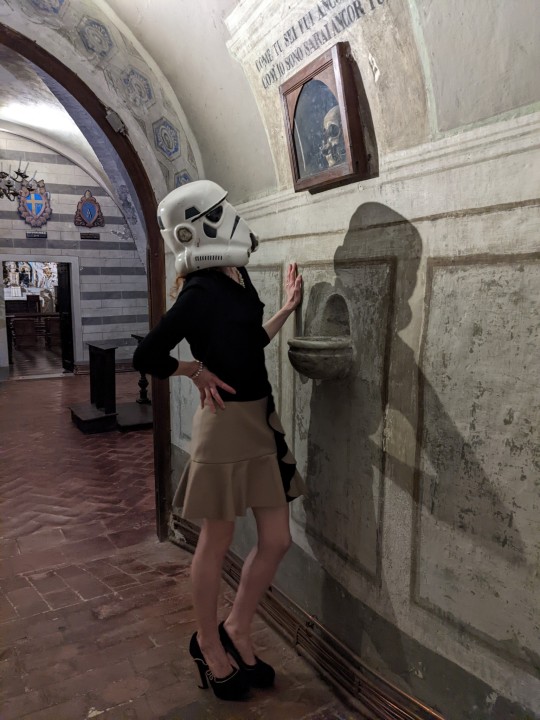

I was as you are, I am as you will be.
19 notes
·
View notes
Text

COSTELLAZIONI. Arte italiana 1915 – 1960. Dalle collezioni Banca Monte dei Paschi di Siena e Cesare Brandi
Da due storiche collezioni d’arte senesi un profilo dell’arte italiana concentrata sulla prima metà del Novecento
0 notes
Text
è mancata Concetta Barreca ved. Trefiletti
è mancata Concetta Barreca ved. Trefiletti Ne danno il triste annunzio i figli Fortunato con la moglie Claudia Scala, Domenico con la compagna Paola Vaccalluzzo, la nipote Patrizia Gangemi e il marito Michele Scollica. I funerali avranno luogo domani 14 c.m. alle ore 15.00, nella Chiesa parrocchiale di Santa Maria d’Itria.

View On WordPress
#Domenico con la compagna Paola Vaccalluzzo#è mancata Concetta Barreca ved. Trefiletti Ne danno il triste annunzio i figli Fortunato con la moglie Claudia Scala#la nipote Patrizia Gangemi e il marito Michele Scollica. I funerali avranno luogo domani 14 c.m. alle ore 15.00#nella Chiesa parrocchiale di Santa Maria d’Itria
0 notes
Text

they don't know I'm madly in love with a pic.
#basilica di santa Maria in Ara Coeli#scala dell' Arce Capitolina#roma#italy#santa margherita#marco benfial#“Morte di Santa Margherita da Cortona”#gothic#gotico#art#gothic art#culture#rome
1 note
·
View note
Text
SCAVI / A Siena torna alla luce l’imponente villa romana di Pieve al Bozzone
La prima campagna di scavi, conclusasi nei giorni scorsi, sta riportando l'attenzione sulla grande villa romana datata fra il I e il IV secolo d.C., individuata alla fine dell'Ottocento ma poi rinterrata.
La prima campagna di scavi, conclusasi nei giorni scorsi, sta riportando l’attenzione sulla grande villa romana datata fra il I e il IV secolo d.C., individuata alla fine dell’Ottocento ma poi rinterrata. Sul sito mosaici, pitture, terme, marmi e colonne, già esposti nel complesso museale di Santa Maria della Scala. Un momento degli scavi (foto: Università di Siena). Si è conclusa da pochi…

View On WordPress
#archeologia#età romana#notizie#Pieve al Bozzone#Santa Maria della Scala#scavi#scavi archeologici#Siena#Università di Siena#villa romana di Pieve al Bozzone
0 notes
Text


Santa Maria della Scala, once a civic hospital dedicated to caring for abandoned children, the poor, the sick and pilgrims.
Siena, Tuscany
Dec. 2019
#siena#tuscany#toscana#travel#italia#italy#architecture#architecture photography#historical architecture#medieval#medieval art#fresco#original photography#photographers on tumblr#photography#lensblr#frescoes#fresco painting#wandering#museum#museum photography#medieval architecture#wanderingjana
456 notes
·
View notes
Text


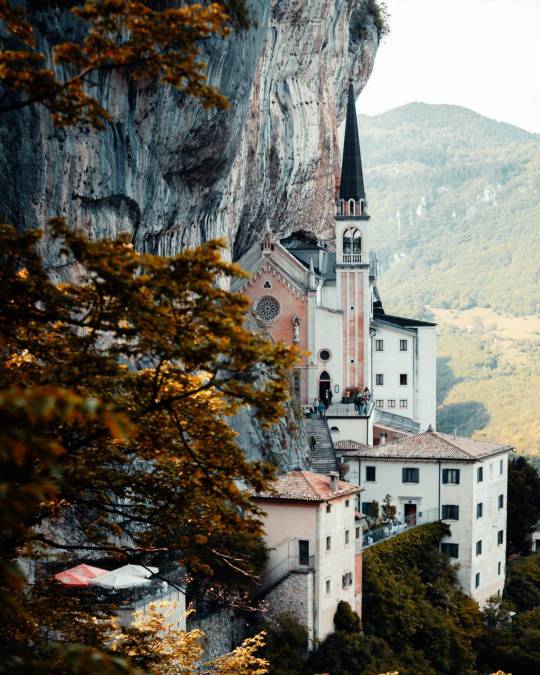









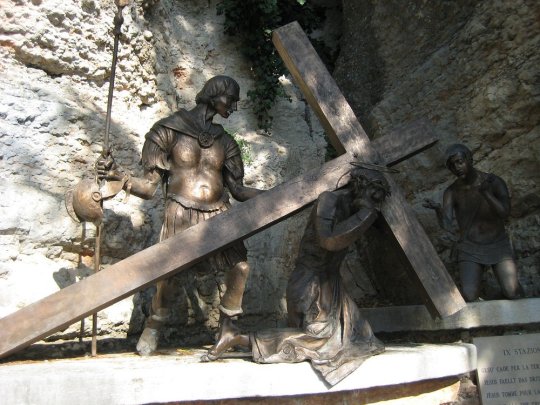



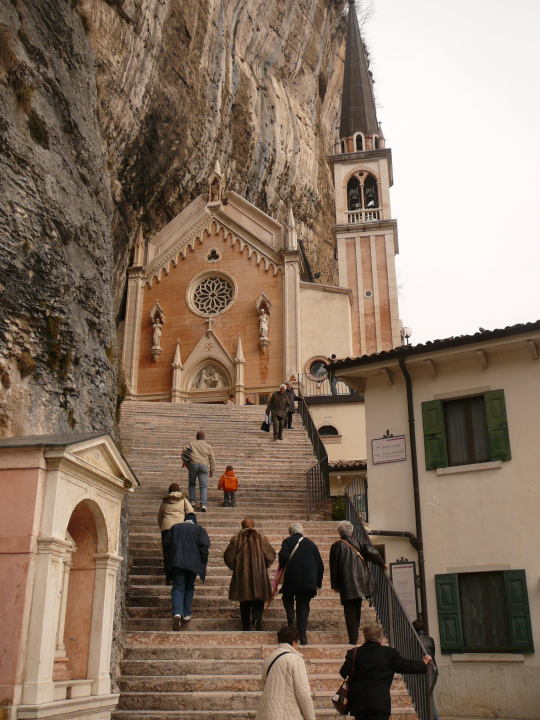
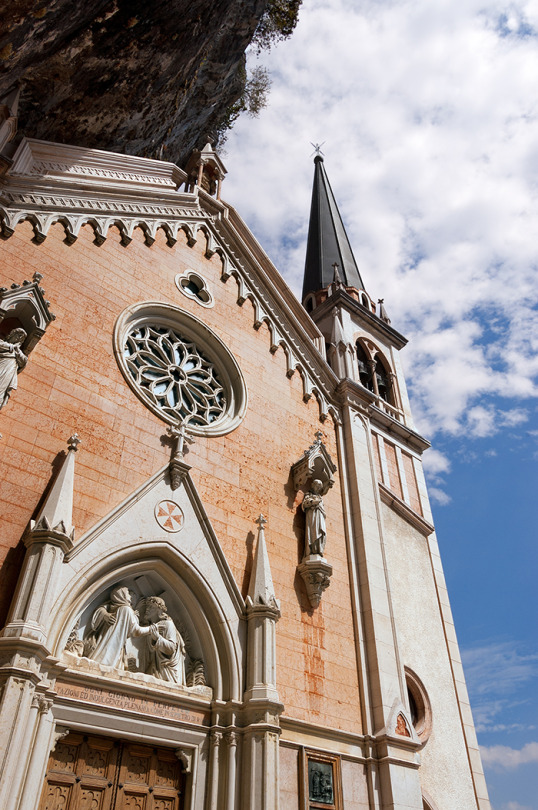




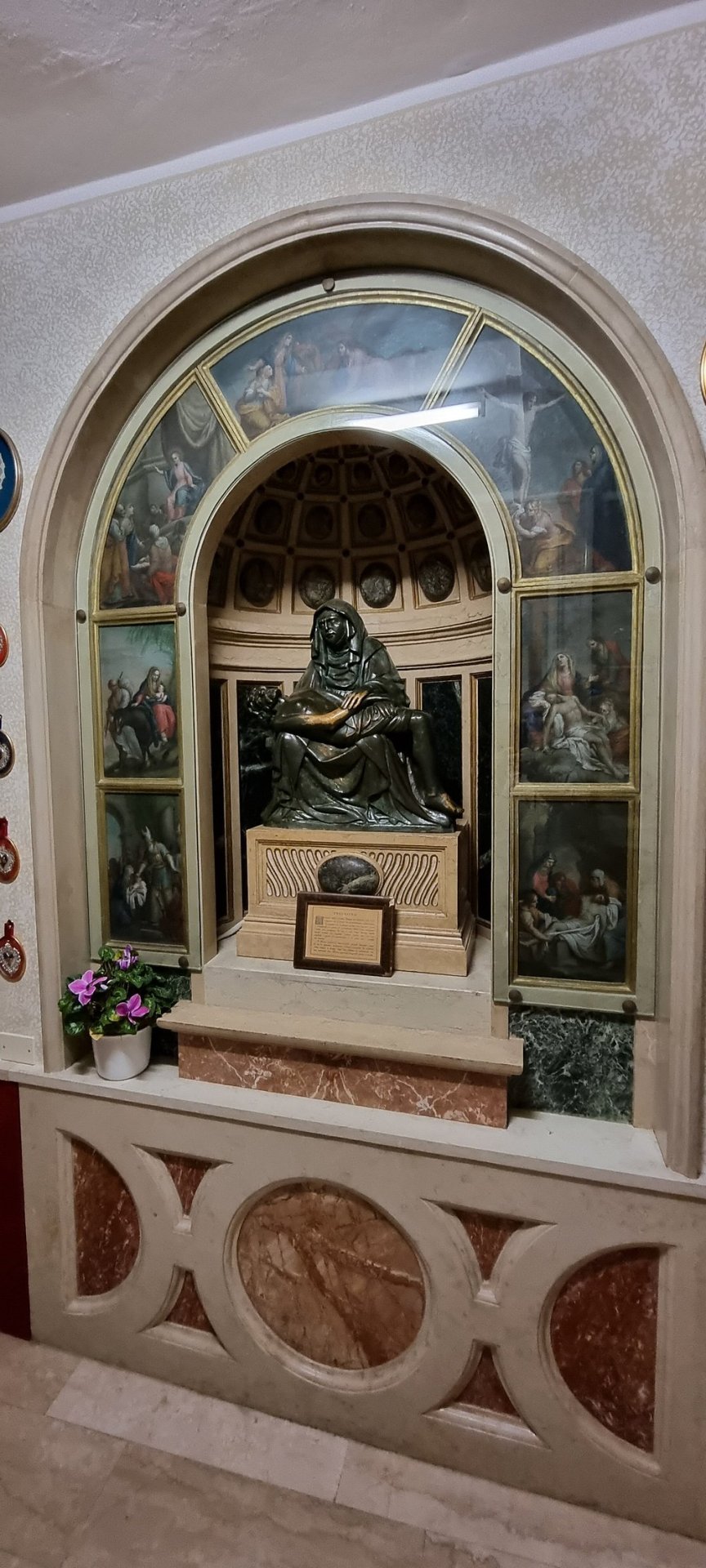



Святилище Богоматери Короны (Santuario Madonna della Corona).
Святилище Мадонны делла Корона находится в деревне Спьяцци, в провинции Верона. Этот церковный комплекс построен прямо в скальной стене горы Бальдо в Альпах, на высоте 774 метров над уровнем моря. Под ним расположена долина реки Адиже, а над ним возвышаются утес и бескрайнее небо.
Считается, что около 1000 года благочестивые отшельники, связанные с аббатством Святого Зено в Вероне, основали на горе Бальдо религиозное убежище. К XIII веку здесь уже существовал монастырь. По легенде, строительство святилища началось в 1522 году, когда статуя Мадонны чудесным образом была перенесена с острова Родос на это место «по воле ангелов» после захвата Родоса османскими войсками. В 1530 году на месте чуда была построена часовня, а через столетие — более крупная церковь. Последние значительные работы по реконструкции проходили в 1970-х годах под руководством архитектора Гвидо Тисато. Ранее, в XIX веке, святилище подверглось неоготической перестройке, но позднее его признали нестабильным. Сегодня оно полностью восстановлено и безопасно для посещения.
В средние века в монастырь снизу вела опасная горная тропа, и это был единственный путь. Впоследствии построили мосты, деревянные и каменные лестницы, затем — дорогу на горе, по которой теперь автобус доставляет людей. По лестнице паломники/пилигримы поднимаются до сих пор. Тропа «Путь Надежды» начинается от города Брентино Беллуно. Вверх через лес ведут 1500 ступенек. В среднем на такой подъем в монастырь пилигримы тратят 2 часа.
Кроме того, внутри здания находится Святая лестница (Scala Santa), считающаяся то��ной копией лестницы во дворец Пилата, по которой Иисус поднимался, чтобы услышать смертный приговор.
Sanctuary of Madonna della Corona (Santuario Madonna della Corona).
The Sanctuary of Madonna della Corona is located in the village of Spiazzi, in the province of Verona. This church complex is built directly into the rock wall of Mount Baldo in the Alps, at an altitude of 774 meters above sea level. Below it is the valley of the Adige River, and above it rises a cliff and an endless sky.
It is believed that around the year 1000, pious hermits associated with the Abbey of San Zeno in Verona founded a religious retreat on Mount Baldo. By the 13th century, a monastery already existed here. According to legend, the construction of the sanctuary began in 1522, when the statue of the Madonna was miraculously transferred from the island of Rhodes to this place “by the will of angels” after the capture of Rhodes by Ottoman troops. In 1530, a chapel was built on the site of the miracle, and a century later, a larger church. The last significant reconstruction work took place in the 1970s under the direction of the architect Guido Tisato. Earlier, in the 19th century, the sanctuary underwent a neo-Gothic reconstruction, but it was later recognized as unstable. Today, it is fully restored and safe to visit.
In the Middle Ages, a dangerous mountain path led from below to the monastery, and this was the only way. Later, bridges, wooden and stone stairs were built, then a road on the mountain, along which a bus now takes people. Pilgrims still climb the stairs. The "Way of Hope" trail starts from the town of Brentino Belluno. 1,500 steps lead up through the forest. On average, pilgrims spend 2 hours on this climb to the monastery.
Also inside the building is the Holy Stairs (Scala Santa), which is considered an exact replica of the stairs to Pilate's palace that Jesus climbed to hear his death sentence.
Источник://t.me/borderlesstravel, /lifeglobe.net/entry/14697, /a-lex-7.livejournal.com/626492.html, /tourweek.ru/blogs/3449989, /www.tripadvisor.ru/Attraction_Review-g1785335-d3246292-Reviews-Santuario_Basilica_Madonna_Della_Corona-Ferrara_di_ Monte_Baldo_Province_of_Veron.html.
#Италия#история#архитектура#готика#классицизм#Святилище Мадонны делла Корона#храм#алтарь#статуи#лесница#горы и лес#Альпы#Italy#history#Architecture#medieval#church#Gothic#Classicism#Sanctuary of the Madonna della Corona#altar#statues#staircase#Alps#mountains and forest
161 notes
·
View notes
Text






CARAVAGGIO - DEATH OF THE VIRGIN, 1606
This artwork was commissioned by the jurist Laerzio Cherubini, who intended to display the canvas in his private chapel at Santa Maria della Scala in Rome. Caravaggio not only failed to meet the contract deadlines, but he also delivered a piece that bore no resemblance to the aesthetic and iconographic standards of other artworks from that era.
Caravaggio depicted the unremitting grief of an ordinary human death. Mary rests on a makeshift bed, an impoverished woman, plainly dressed and barefoot, with a swollen belly and too exhausted to embrace the release of death. The same Mary Magdalene who cried in "The Entombment" stays despondently near her, while the apostles stand by, hushed, and helpless.
The setting does not depict individuals of noble or high lineage, but rather those who share the same reality as that of the Apostles and the Virgin. While in Rome, Caravaggio frequently had the chance to examine corpses up close, even days after death. Consequently, it is believed that the swelling of the Virgin might stem from this observation.
Caravaggio was misunderstood because he refused to filter reality. He couldn't lie, particularly in the presence of death; even when it truly signifies a rebirth, as seen with Mary. The spiritual homage that various artists aimed to celebrate through the fleeting glorification of beauty is present and acknowledged here in the deep sorrow of the apostles and Mary Magdalene. It is witnessed and exalted through strong colors and the true beauty of simple things.
58 notes
·
View notes
Text

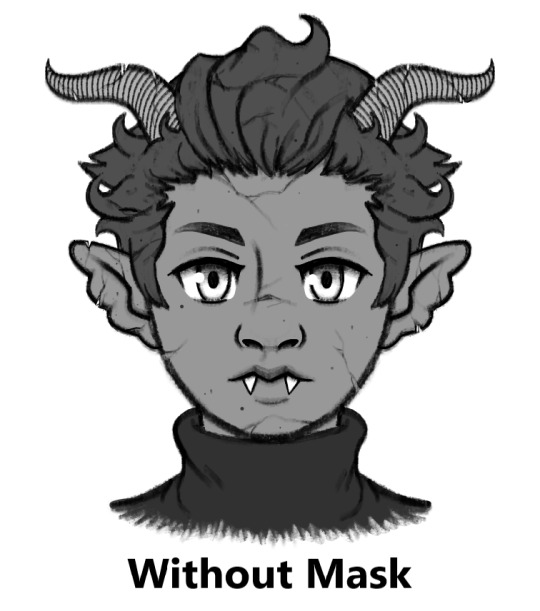
Here's my take on a Halloween Town Vidar. He's a gargoyle with a wolf skull mask.
Design notes under the read more:
I previously mentioned in my Halloween Town Vor post that when Nomura designed Sora, Donald, and Goofy's Halloween Town designs, he took inspiration from two different creatures for each of them. Sora is inspired by vampires and imps, Goofy is Frankenstein's monster mixed with a werewolf, and Donald is a mummy and invisible man. I once again took a similar approach here, though instead of using an even mix of motifs like I did with Vor's fairy + sphinx design, I went down more of a Sora route. IMO, if you look at Sora's Halloween Town design, it mostly reads as vampire despite lots of overlap between vampire and imp design elements, with the exclusively impish details really only being his imp/pumpkin mask and maybe his clawed gloves. For Vidar, he is mostly gargoyle with the wolf motif coming primarily from his wolf skull mask, but there's some overlap of creature motifs with the claws and fangs.
Now, why did I choose to make Vidar a gargoyle? Here are my reasons:
Made of stone. References how Vidar tries to harden his heart to the harm he's potentially causing the worlds. The cracks in the stone represent his slowly crumbling will and the eventual abandonment of his plans. As well, I think him being a living statue well represents his somewhat stoic demeanor and the mythological Vidar's title as the "silent god".
Gargoyles serve as guardians of the buildings they adorn. Throughout the game Vidar was trying his best to protect people and prevent anyone else from dying, especially Baldr.
Water spout gargoyles collect rain water and divert it from the walls and rooftops of buildings to prevent damage to those buildings. Water is sometimes symbolic of darkness in the KH series (for example, the KH1 opening where Riku offers his hand to Sora and gets enveloped by the darkness the waves). So, in my mind, this function of gargoyles represents Vidar's attempts to preserve Baldr by removing the darkness from Baldr's heart.
Gargoyles are commonly found on cathedrals and churches, and I think that religious aspect of them fits Scala society and Vidar's commitment to Light fairly well.
If Vidar were to visit Christmas Town via Halloween Town, I imagine his gargoyle form would change into a sort of "guardian angel" form, but keeping some of the more demonic elements such as the horns for a more Lucifer-esque angel. Sort of like how Christmas Town Sora still keeps many of his Halloween Town elements despite donning a Santa outfit.
Reason why I chose the wolf skull mask:
Probably the most well-known event in the Norse god Vidar's mythology is his battle with the great wolf Fenrir, who he kills by ripping its jaws apart. Thus Vidar wears the top jaw of a wolf skull as a mask, as a sort of "trophy" and reference to this mythology. Of course the "real" Fenrir would be much larger than a normal wolf, but the mask is just a representation.
Now, I'll explain all of my individual design choices from top to bottom:

Gargoyle Horns: There's many styles of gargoyle horns, but I decided to give him more realistic-looking animal horns to add more detail.
Gargoyle Ears: I quite like this type of gargoyle ear with the multiple rounded segments even though I couldn't find many examples of it, and I think it nicely differentiates the ears from elf/demon ears. Vaguely Rochelle Goyle from Monster High inspired, as well.
Wolf Skull Mask: Already explained, but I tried to go semi-realistic here, once again to add more detail and make it more clear what kind of animal skull this is. If this design were to actually appear in a Kingdom Hearts game, I could potentially see this mask being stylized in a more cartoony way (especially if put into the chibi mobile game style.)
Gargoyle Wings (Feathered): I originally gave Vidar the more typical style of gargoyle wing which looks like a bat wing, but I felt that style of wing in conjunction with the horns, claws, and elongated skull mask made him look too much like a dragon, which wasn't what I was going for at all. So I changed it to the other common stye of gargoyle wing, a bird-like wing. I think this also better reflects his role in the game as someone sided with Light.
Stone Skin and Hair: As mentioned, he's made of stone and covered in cracks and nicks. He's pretty much all stone (except his eyes? I guess?)
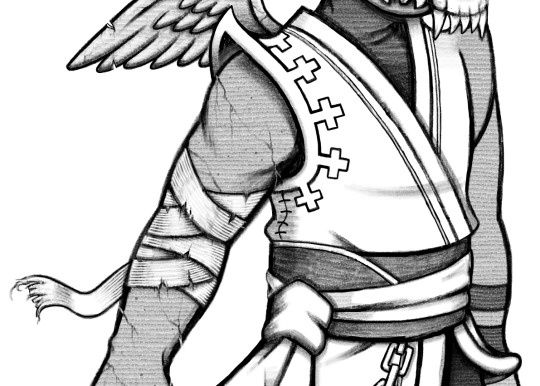
Shoulder Pads? (Don't know what else to call them): I made them more pointy and curled up at the edges for that Nightmare Before Christmas look.
Shoulder Pad Design: I turned the square design on Vidar's shoulder pads into crosses. One, to reference gravestones, but also again to reference back to cathedrals and that religious aspect of gargoyles. Also, it's a subtle detail, but I added a stitched seam to the side of Vidar's coat as well.
Bandages: Vidar's original design features bandage-like cloth underneath one of his gloves, so I took that detail and just put it all around his arm. Weathered and torn for the creepy look.
Wrist Bands: In Vidar's original design, he sports two asymmetrical gloves. Here, the bandages take the place of the more complicated glove, while these two black bands take the place of the simpler glove, which was just a black, fingerless glove comprised of a main glove and two straps above it.

Gargoyle Claws: Not much to say here. Can sort of double as wolf claws, but obviously without the fur.
Scala Emblem Chain: I changed the chain from a bead chain to a more grungy link chain for that Halloween look. Also, I wasn't able to depict this in a way that satisfied me, but I imagine the metal of the charm and chain being a little tarnished and scratched up.
Dirtied Sash and Coat Edge: It's not blood, just grime. Grime, tearing, and weathering for more creepy factor. His coat is pretty long anyway so I could see it getting dirty in the streets of Halloween Town pretty easily.

No Boots: To show off his gargoyle feet. In his original design his pants tuck into his boots, so I don't really know what the bottom of his pants are supposed to look like. I just cinched them at the bottom to maintain that puffed-out look. Is it weird that his feet only have three toes but his hand has three fingers and a thumb? Yeah. But I couldn't get four toes to look right. Just assume he's supposed to have four.
I decided to draw this Halloween Town design in black and white this time, but if I had colored it, you can imagine the color scheme of his clothes being darker and less saturated than his original design to better match Halloween Town.
Also, this was just a coincidence, but both Vor and Vidar's Halloween Town designs feature wings, claws, and fangs, and have a sort of cat (sphinx) and dog (wolf) theme. Which I think is cute and makes them feel more like a duo. :)
That's it. Thanks for reading.
61 notes
·
View notes
Text
Medieval Hospitals with Sarah Loose Guerrero

This week, Danièle speaks with Sarah Loose Guerrero about what to expect at a medieval hospital, how institutions like the Ospedale di Santa Maria della Scala supported citizens from infancy to adulthood, and what hospital support looked like for both urban and rural communities.
Click here to listen
21 notes
·
View notes
Text
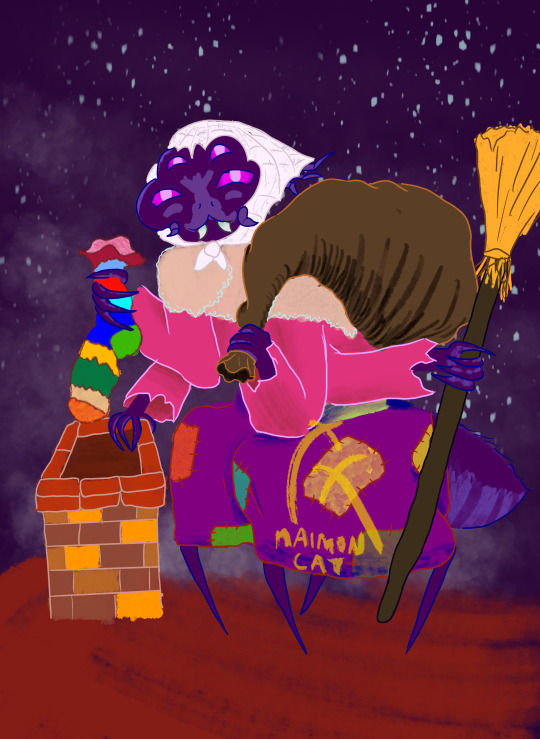
“La Shamura vien di notte, Con le tempie tutte rotte, Scala i tetti con bravura. Viva, viva la Shamura!“
(Mi scuso tanto)
Sono proprio contento di come sia venuto questo pezzo. Quando ho cominciato questa serie di disegni mi sono immediatamente reso conto che shamura doveva fare da Befana. Guardate quant‘è adorabile! (Purtroppo si è dimenticatə di avvisare chiunque nel culto che avrebbe preparato questo, quindi un sacco di gente sarà sorpresa da un enorme ragno che le entra in casa dal camino)
Mi mancheranno i disegni per le feste agnellizie, ma sapete com’è, “L’Epifania, tutte le feste se le porta via!”. Sotto vi lascio una lista dei diversi
Ich bin echt froh, wie dieses Bild rausgekommen ist. Als ich diese Reihe angefangen habe, wusste ich, dass Shamura die Befana sein sollte. Schaut mal, wie froh diese Spinne ausschaut! (Leider hat sier keinem von seinihrem Projekt erzählt, darum werden Heut Abend die Leute ziemlich überrascht über die Riesenspinne, die ihnen ins Haus krabbelt, sein)
Ach, ich werde dieses Zeichenprojekt vermissen! Aber die Weihnachtszeit ist nun endlich vorbei!
I'm quite pleased with how this piece came. When I started this series, I just knew I had to make Shamura be the Befana. Look how adorable they are! (Unfortunately they forgot to tell anyone of their plan, so tonight people will be quite shocked to find a giant spider crawling down their chimney)
I'm gonna miss these drawings, but Christmas can’t last forever!
Sankt Barbamar
Heiliger Heketlaus mit Schellenpercht
(Non così) immacolata concezione
Santa Leshia coll‘asinello Somy
Das Heilige Lamm
#Happy lambdays#Merry lambmas#cotl shamura#befana#epifania#la befana#cult of the lamb#cotl#furry art#art#digital art#cult of the lamb shamura#shamura fanart#follower shamura#my art#my artwork#maimon draws#Frohe Lammnachten#Buone feste agnellizie#On the twelfth day of Lambmas…#12. Lammnachtstag#Dodicesimo giorno agnellizio#furry#anthro#anthro art
37 notes
·
View notes
Text
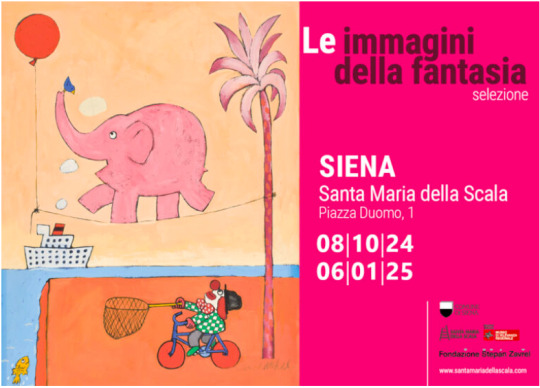
LE IMMAGINI DELLA FANTASIA. – Selezione (Mostra Internazionale d’Illustrazione per l’Infanzia)
Una mostra di illustrazioni per l’infanzia in collaborazione con la Fondazione Zavrel di Sarmede, nella pedemontana trevigiana
0 notes
Text
FATEMI CAPIRE
Che cos'ha di particolare la morte di Giulia Cecchetin da giustificare tutto questo stracciar di vesti, loghi in sovraimpressione e minuti di silenzio in varie sedi istituzionali o meno?
Cioè, prima di lei sono state ammazzate Giulia Donato, Martina Scialdone, Oriana Brunelli, Teresa Di Tondo, Alina Cristina Cozac, Yana Malayko, Melina Marino, Santa Castorina, Iulia Astafieya, Maria Febronia Buttò, Zenepe Uruci, Sara Ruschi, Brunetta Ridolfi, Danjela Neza, Jessica Malaj, Giulia Tramontano, Maria Brigida Pesacane, Floriana Floris, Svetlana Ghenciu, Margherita Ceschin, Maria Michelle Causo, Mariella Marino, Angela Gioiello, Sofia Castelli, Celine Frei Matzohl, Anna Scala, Vera Schiopu, Rossella Nappini, Marisa Leo, Maria Rosa Troisi, Liliana Cojita, Anna Elisa Fontana, Klodiana Vefa, Concetta Marruocco, Annalisa D'Auria, Etleva Kanolja e Michele Faiers Dawn.
38 donne ammazzate solo nel 2023.
56 nel 2022
61 nel 2021
63 nel 2020
Se la reazione è dovuta a quei particolari strappalacrime tipo che si doveva laureare il giorno dopo o il fiato sospeso per il desiderio popolare di una storia a lieto fine, allora devono andare tutti a cagare pezzi di vetro.
Magari le altre 38 non si dovevano laureare ma sapete com'è, magari volevano vivere lo stesso.
178 notes
·
View notes








